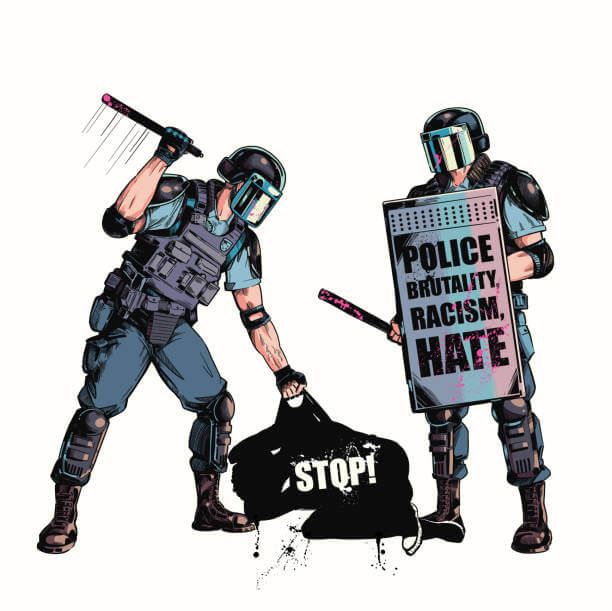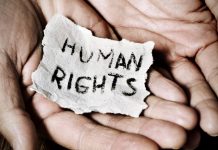This article is written by Anusha Misra from NALSAR University of Law. This article evaluates the problem with police officials and the effect on society.
Table of Contents
Introduction
The Indian police’s framework can be traced back to the Police Act, 1861 which was enacted after the Revolt of 1857. With the progress that society has made, what one expects from the police has also changed drastically as the nature of crimes committed has also changed vastly owing to technological advances. Thus, a necessity to change or reform the system which stems from an act passed in the 19th century arises. With the rapidly changing society, it becomes important to bring systematic change within the police system to be on par with the current scenario.
Problems inherent in the police system
The police system and operation in India face various problems. These problems have been listed below.
Politician – police nexus
Within the existing system, the police are within the control of the executive. The state police forces are under the control of the state governments, while the central police services like CRPF are under the control of the Ministry of Home Affairs. Recent trends illustrate that the executive tends to misuse its powers to further its agenda. This leads to bias within the police as established by the Second ARC report.
Understaffed police force
Police forces in India both the central and state forces are severely understaffed leading to an overburdened police force. This leads to long working hours for the personnel and leaves them with a vast workload thereby affecting the effectiveness of the force.
Inadequate resources
The police forces suffer from the vice of inadequate resources. The CAG audits findings reported that there remains a shortage of weapons with several police forces as well as police vehicles.
Police-public relations
It is inevitable for police personnel to come in contact with the general public. The police also require support from the public to carry out their functions while maintaining law and order. There seems to be a growing sense of dissatisfaction amongst the public which affects the general morale of the police.
One way by which this problem can be overcome is under the community policing model. In the community policing model, the police are to work with the community for maintaining law and order. It may include patrolling by the police for non-emergency interactions with the public, actively soliciting requests for service not involving criminal matters, community-based crime prevention, and creating mechanisms for grassroots feedback from the community. Many states have tried adopting this model. For example, Janamaithri Suraksha in Kerala is a project that facilitates interaction between the police and the public.
The concept of favouritism
Favouritism is an issue that exists in most workplaces. Thus, the concept of favouritism emerges amongst the police as well. Favouritism is of many types. Favouritism is called “nepotism” when it occurs with relatives; it is called “cronyism” when it occurs between friends; it is called “patronage” when it occurs as a result of religious or political identity, and it is called “clientelism” if it occurs as a result of interest between a politician and its constituency. In general, favouritism amounts to using someone’s position to hire or promote people based on a personal level without taking into account the skill or expertise of the person in question. While favouritism has reduced drastically in developed countries, it remains a problem in developing countries like India.
Favouritism occurs due to several causes. For one, it’s a natural part of social categorization; we tend to categorise into ingroups and outgroups as a result it helps India modify and structure our surroundings. It is easy, and maybe even natural, to believe the easy concept that “we square measure higher than they are”.
But the foremost vital determinant of favouritism is straightforward self-enhancement. After we will determine ourselves as a member of a meaningful group (even if it’s a comparatively trivial one), we can feel higher regarding ourselves.
In workplaces where favouritism is prevalent, the employees lose motivation thereby affecting the efficiency of work and productivity. In the police force favouritism leads to distrust of the police officers themselves in the system and eventually leaves them very distressed.
Police brutality and human rights violation
The concept of police brutality is not new to India. Police brutality in India stems from the Police Act of 1861. The Protection of Human Rights Act, 1993 led to the establishment of Human Rights Commissions to ensure that the police personnel were held accountable for their misconduct. The Third Report found that sixty per cent of arrests are unlawful and were without following proper procedure. The findings put forth by the National Campaign against torture, stated that 1731 people died during police interrogation in 2019.
The case of Jayaraj and Bennix – how the police protected their own
Jayaraj and Bennix died after a few days owing to the torture they were subjected to while in custody. In an attempt to protect their own it was revealed that the CCTV footage of the arrest and the recordings of what happened in the police station had been deleted This unfortunately is not the only case about police brutality in India.
The inherent bias of the police
Inherent bias refers to the association that people make between groups of people and stereotypes the groups automatically. Such bias occurs in the absence of bigotry or hatred simply because of the subtle biases that exist within the media and society itself. The Status of Policing in India Report, 2019 by a common cause and the Centre for the Study of Developing Societies dwells into the police prejudice. According to the report there exists a significant bias against Muslims, Adivasis, Dalits, transgenders and migrants from other states. It was also found that most police personnel have not been sensitised and trained concerning the concept of human rights.
Remedies, as well as compensation, are sought-after before the High Courts and the Supreme Court. However, these constitutional courts don’t seem to be widely accessible and frequently deal solely with conspicuous cases wherever the burden of proof is high.
Relief may also be sought-after before the National and the State Human Rights Commissions established under the Protection of Human Rights Act,1993, however, their recommendations don’t seem to be binding on various governments.
Criminal complaints are filed against the involved officers for offences beneath the Indian Penal Code, 1860, however, there’s no mechanism for freelance investigation. As a result, police personnel typically refuse to register FIRs against their colleagues. The safeguard beneath Section 197 of the Code of Criminal Procedure, 1973, is typically misused. This Section needs the previous sanction from the involved government employee, which incorporates a police officer, is suspected of any offence committed within the discharge of official duty.
Lastly, since the police is a state subject under the Constitution of India, disciplinary proceedings and social control for errant law enforcement officials like suspension, removal or deduction of earnings is provided beneath various state enactments. However, these proceedings, too, are tainted by the shortage of independent and impartial oversight. Moreover, most state enactments stem from the Police Act of 1861, Victorian-era legislation which did not prioritise disciplining the police.
In the case of Vineet Narain & Ors. v. Union of India & Anr (1998), the Supreme Court noticed the urgent need for the State Governments to set up the requisite mechanism and directed the Central Government to pursue the matter of police reforms with the State Governments and ensure the setting up of a mechanism for selection/appointment, tenure, transfer and posting of not merely the Chief of the State Police but also all police officers of the rank of Superintendents of Police and above. The Court expressed its shock that in some States the tenure of a Superintendent of Police is for a few months and transfers are made for whimsical reasons which have a not only demoralizing effect on the police force but is also alien to the envisaged constitutional machinery.
In the case of Prakash Singh v. Union of India (2006), the Supreme Court directed the states to establish Police Complaints Authorities. The recommendations of these authorities concerning a delinquent police officer would be binding according to the court. An appointment mechanism that is independent of the members who decide the complaints was also laid down. The directions of the Supreme Court unfortunately have been ignored. The Justice Thomas Committee was appointed by the Supreme Court to ensure that guidelines put forth by the Supreme Court were enforced and noted in its 2010 report the indifference of the states.
In the case of T.Suneel Kumar Ips v State of Karnataka (2013), the Ministry of Home Affairs, Government of India, set up a Police Reforms Committee in pursuance of the directions of the Supreme Court to review action taken to implement the recommendations of the National Police Commission (NPC), National Human Rights Commission (NHRC) and the Vohra Committee.
In the case of Arun Kumar Bhadoria v State of Uttarakhand (2018) it was held that the Police Act of 1861 should be replaced by a new Police Act, which not only changes the system of superintendence and control over the police but also enlarges the role of the police to make it function as an agency that promotes the rule of law in the country and renders impartial service to the community.
How bias can be overcome
While there is no clear cut mechanism as to how bias can be overcome, listed below are some ways to go about it.
Raise awareness of inherent bias among police officers
Amendment ought, to begin with, a widespread understanding concerning the implicit bias and the way to acknowledge it in ourselves. Introducing the thought of implicit bias through colloquial interaction permits the discussion of however the brain creates and stores conventional references.
The awareness coaching has got to begin at the least bit levels inside the police organization however the foremost vital level of understanding has got to begin with police leadership. There remains a variety of people in leadership and management positions in the World Health Organization that don’t believe implicit bias is a difficulty, and don’t perceive what has happened between the police and community, particularly with decades of lower crime rates as proof of a functioning relationship. That’s why awareness and coaching must begin with supervisors—how it will affect themselves moreover as their officers and therefore the entire department.
The IAT (Implicit Association Test) is another mechanism that may facilitate raising awareness of implicit bias. They will be used as a supplement to colloquial coaching and infrequently offer additional privacy for people who don’t seem to be prepared for public spoken communication. The mixture of implicit bias introductory training/conversations will begin to ease the stress of being known as a racist and eventually open up to somebody else’s experiences.
Rework the relations between the police and the community
When a local department hires from the community it serves, it doesn’t simply send a message of equality there to the community. It additionally creates the conditions inside the department for the contact between teams that may cut back negative implicit bias among officers, significantly once the leadership makes a special effort to facilitate dialogue and positive experiences.
“Community policing” will facilitate an approach that encourages officers to make relationships with the folks within the neighbourhood. It’s going to cut back the biases that residents may hold against the police moreover as any police hold against residents. A bigger awareness of the role bias plays in their interactions can facilitate moving the community-police relationship into an area wherever cooperation will root.
Place policies to limit the impact of bias
Policies should be disciplined and should distinguish expression from implicit bias. If an official will show a bent toward expressly discriminatory behaviour, the difficulty should be quickly and effectively addressed by a supervisor, ideally protected by clear policies. However, in cases of attainable implicit bias—patterns which may be occurring outside of the officers’ aware control—it might not be applicable to formally discipline the officer. Instead, the most effective response is facilitating positive contact across teams, conversation, and coaching that aims to lift awareness of implicit bias. By cultivating awareness of our own biases, the spoken communication will amend and ultimately offer a path to true community policing.
Conclusion
Despite the fact that several panels and even the Supreme Court have issued directives on police reform, no significant change has happened. This is because of lack of political will leading to the reluctance towards a change in the status quo by the political factors and police. Had the police been a democratic or a representative, the recommendations would have been implemented. With the advent of modernisation, new technologies like artificial intelligence cannot be neglected while aiming for a systemic change or reforms in the policing structure.
References
Students of Lawsikho courses regularly produce writing assignments and work on practical exercises as a part of their coursework and develop themselves in real-life practical skills.
LawSikho has created a telegram group for exchanging legal knowledge, referrals, and various opportunities. You can click on this link and join:












